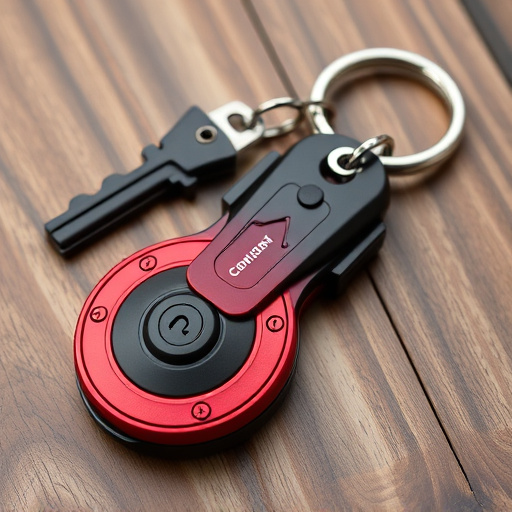Tactical keychain weapon techniques require careful consideration of regional regulations, as local laws dictate what is legal. Consumers and retailers must research and understand these laws, focusing on design, functionality, material types, and sharpness levels. Prioritizing legal compliance and personal safety, select keychains with easy accessibility, secure locking mechanisms, reliable materials, and robust construction. Responsible ownership includes adhering to safety standards, proper training, secure storage, and avoiding public displays to effectively and legally utilize tactical keychains as self-defense tools.
In today’s world, personal safety is paramount. One innovative solution gaining traction is the tactical keychain weapon—a compact self-defense tool that combines convenience with potential life-saving capabilities. However, navigating the legal frameworks surrounding these devices can be complex. This article explores the essential aspects of keychain safety device legal requirements, including an in-depth look at global regulations and the critical features that ensure compliance and user safety when employing tactical keychain weapon techniques.
- Understanding Legal Frameworks: Keychain Weapon Regulations Across Jurisdictions
- Essential Features of a Legal Keychain Safety Device
- Tactical Keychain Weapon Techniques: Compliance and Safety Considerations
Understanding Legal Frameworks: Keychain Weapon Regulations Across Jurisdictions
In navigating the legal frameworks surrounding keychain safety devices, especially those with tactical features, understanding variations across jurisdictions is paramount. What may be permissible in one region could be subject to strict regulations or even prohibited in another. This underscores the importance of researching local laws before acquiring a tactical keychain weapon. The onus lies on both consumers and retailers to stay informed about these legalities to ensure compliance.
Regulations governing keychain weapons often encompass considerations related to their design, functionality, and intended use. For instance, some areas might restrict the type of materials used or the level of sharpness allowed. Moreover, laws could differentiate between self-defense tools that are openly carried versus those concealed within a keychain. Understanding these nuances is crucial for individuals looking to employ tactical keychain weapon techniques effectively while adhering to legal boundaries.
Essential Features of a Legal Keychain Safety Device
When considering a keychain safety device for legal compliance and personal security, several essential features come into play. One of the primary aspects is the device’s ability to transform into a tactical keychain weapon. This functionality ensures that in case of an emergency, the device can be swiftly deployed as a self-defense tool. Look for products that offer easy accessibility and a secure locking mechanism, allowing users to quickly retrieve the weapon when needed.
Additionally, the reliability and durability of the device are paramount. High-quality materials and robust construction guarantee its longevity, ensuring it remains functional over time. Features like impact resistance, sharp edges, or a sturdy build indicate a serious commitment to personal safety. Incorporating tactical keychain weapon techniques into your choice of device can significantly enhance its effectiveness during unexpected situations.
Tactical Keychain Weapon Techniques: Compliance and Safety Considerations
Tactical keychain weapon techniques, while useful for self-defense and emergency situations, must adhere to strict legal requirements and safety considerations. It’s essential to understand that carrying a tactical keychain as a weapon is subject to local, state, and federal laws, which vary widely across different jurisdictions. In many places, these devices are classified as restricted or prohibited items, especially if they have features resembling those of a knife, firearm, or other regulated arms.
When utilizing tactical keychain weapon techniques, ensure the device meets any required safety standards and is designed for self-defense purposes only. The user must also be trained in its proper handling and deployment to minimize risks of injury to themselves or others. Responsible ownership includes keeping the device securely stored when not in use and adhering to responsible carrying practices, such as avoiding public displays or potential trigger situations.
When it comes to tactical keychain weapon techniques, ensuring compliance with local legal frameworks is paramount. By understanding the unique regulations in your jurisdiction, you can choose a keychain safety device that incorporates essential features for legal adherence and personal safety. This comprehensive approach allows individuals to carry self-defense tools responsibly while staying within the boundaries of the law, ultimately fostering a safer environment for all.
